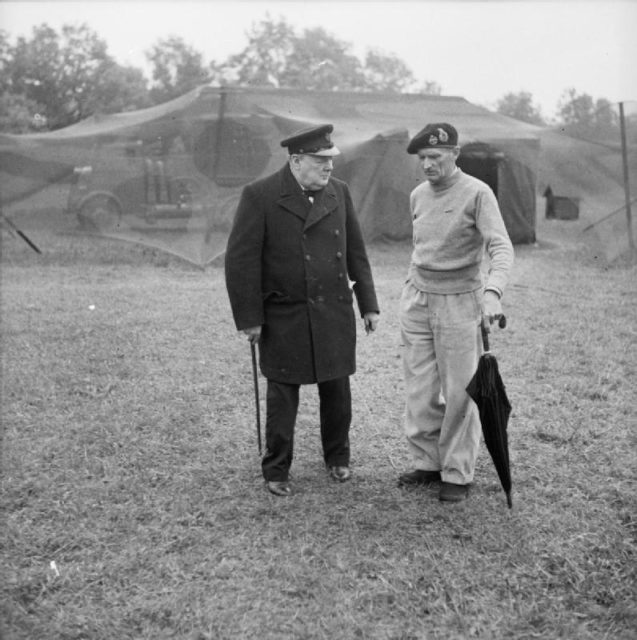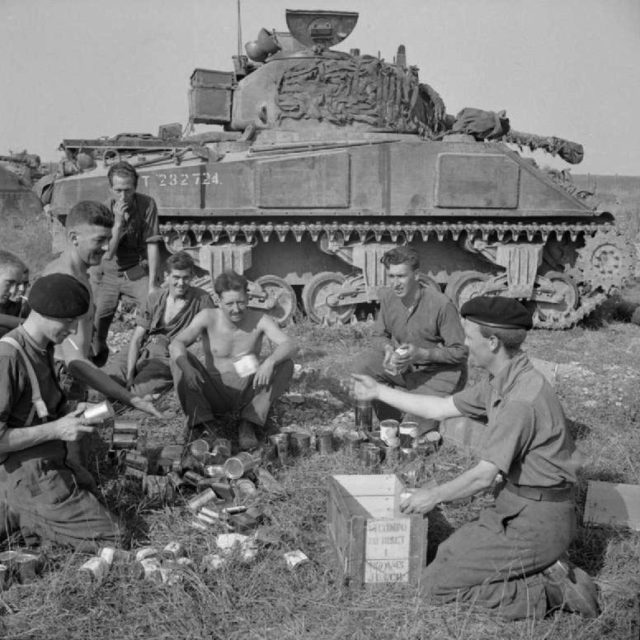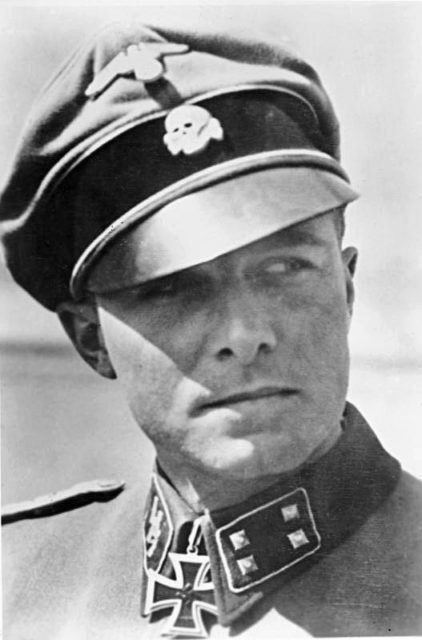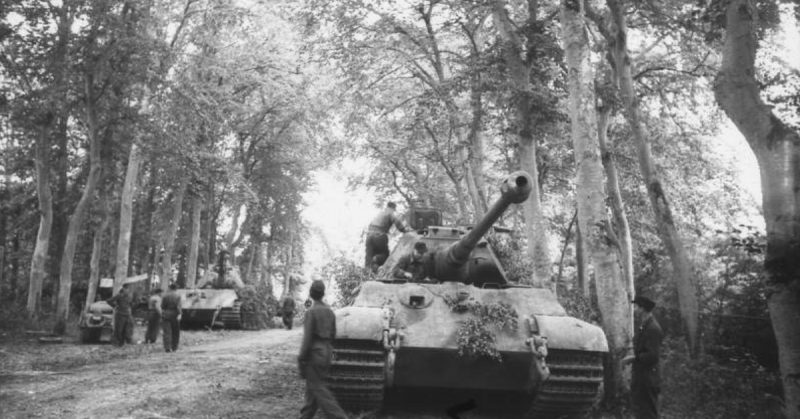July 19
July 19th, 1944, day two of “Operation Goodwood,” Field Marshal Bernard L. Montgomery’s massive armored onslaught on the German defensive lines south of Caen, Normandy. The day before, an aerial bombardment of unheard of proportions proceeded General Sir Richard O’Connor’s VIII Armored Corps’ assault. The British armor had meant to hurl the Germans off the prominent Bourguébus Ridge, then break into the open country beyond. But the resolute Wehrmacht and Waffen-SS defense was as hard as steel and though it bent it remained unbroken.
During the early morning hours of July 19th, the already battered tank regiments of the British 11th Armored Division, the 3rd Royal Tank and the 2nd Fife and Forfar Yeomanry, as well as the 2nd Northamptonshire Yeomanry Reconnaissance prepared for another assault. Commanded by Africa veteran Major General ‘Pip’ Roberts, the 11th “Black Bull” was arguably the best British armored division. At 37 years of age, Roberts was the youngest British divisional commander. Also committed to the attack were Maj. Gen. Allan Adair’s Guards Armored Division and Maj. Gen. Bobby Erskine 7th Armored, the famed “Desert Rats.”

On the ridges above, elements from Kurt “Panzer” Meyer’s 12th SS Hitlerjugend Panzer Division trickled in. Hitlerjugend took over for the 21st Panzer Division, which pulled out for a rest, deploying on the eastern Bourguébus ridges, shoulder to shoulder with the 1st SS Leibstandarte Panzer Division. At the crack of dawn, the 3rd Royal Tank Regiment again drove up the slope towards Bras and Hubert-Folie. Major Bill Close, commander of A Squadron, related, “as we reached the line of tanks burned out the day before, we again encountered heavy fire, intensified by more tanks on the ridge.” No sooner had Close hopped out of his tank to help some wounded crews than a shell smashed into his own tank’s turret, instantly killing the gunner and operator. “Once again I had to turn out a tank commander and take command from his tank” remembered Close.
The 2nd Northamptonshire Yeomanry Regiment struck for Bras but got lost and exposed their flanks to the German guns in the village of Ifs. “Half their tanks were brewed up or knocked out” Close remembered. The situation changed with the arrival of British field guns by the afternoon, pounding Bras before the 3rd Royal tanks with grenadiers joined the assault under the cover of a smoke screen. An SS grenadier relates: “The tanks rolled up. Two, five, eight, ten, we stopped counting. They approached our foxholes carefully. Dread and fear paralyzed us. We knew they would pulverize us. Those of us who survived were taken prisoner.”

While British grenadiers mopped up in Bras, the 2nd Northamptonshire Yeomanry Cromwells drove on to Hubert-Folie at 1810hrs. A hail of high-pitched machine gun and cannon fire erupted from Leibstandarte grenadiers and StuGs in Hubert-Folie, supported by Standartenführer (Lt. Col) Joachim Peiper’s 1st SS Panzer Regiment’s panzers farther up on the ridge. The Yeomanry Cromwells were decimated. At 2000hrs it was the 2nd Fife and Forfar’s turn to storm Hubert-Folie. To their surprise they took the village without opposition, the SS grenadiers having pulled back up the ridge to join Peiper’s panzers at Verriéres.
An hour before the 2nd Fife and Forfar took Hubert-Folie, the 32nd Infantry Brigade of the Guards Division went for Le Poirier. The village again changed hands. But when the 32nd pushed on to Frénouville the Hitlerjugend grenadiers backed by Jagdpanzers brought them to a halt.

At Four and Soliers, faced with the advance of the 7th Armored Division’s 22nd Brigade, the Leibstandarte’s 2nd SS-Panzergrenadier Regiment carried out a fighting retreat up the Bourguébus-la Hogue ridge. The 7th Armored Division’s 5th Royal Tank Regiment continued to press the attack but came under withering fire by Peiper’s 1st Panzer Regiment around Bourguébus village. The British Tankers pulled back to Four and Soliers, leaving behind eight smoldering Shermans.
With nightfall of the second day of Goodwood, the British-Canadian forces stood poised in front of their prime objective, the Bourguébus ridge, which still remained in German possession. As tired soldiers got what rest they could, one thing was for sure; there would be be more bloody fighting the next day. Over the course of the last two days, Montgomery’s great offensive “Goodwood” had slowly gained ground. But at what cost? Would July 20th crack the German defense? Would they be driven off the ridge? Would the English tanks roll into the open plain beyond and was Falaise still attainable? Still holding the ridge, the soldiers of the Third Reich had hotly contested every yard of ground. But their companies were exhausted and drained of their fighting strength. The Leibstandarte’s 1st StuG battalion for example, was reduced to only three operational vehicles left from an original 20. The fighting of the next day was destined to decide the outcome of the battle.
L.H. Dyck’s unabridged Goodwood article, accompanying notes and sources is available at Ludwig H. Dyck’s Historical Writings: Operation Goodwood: Epic Armor Clash in Normandy
